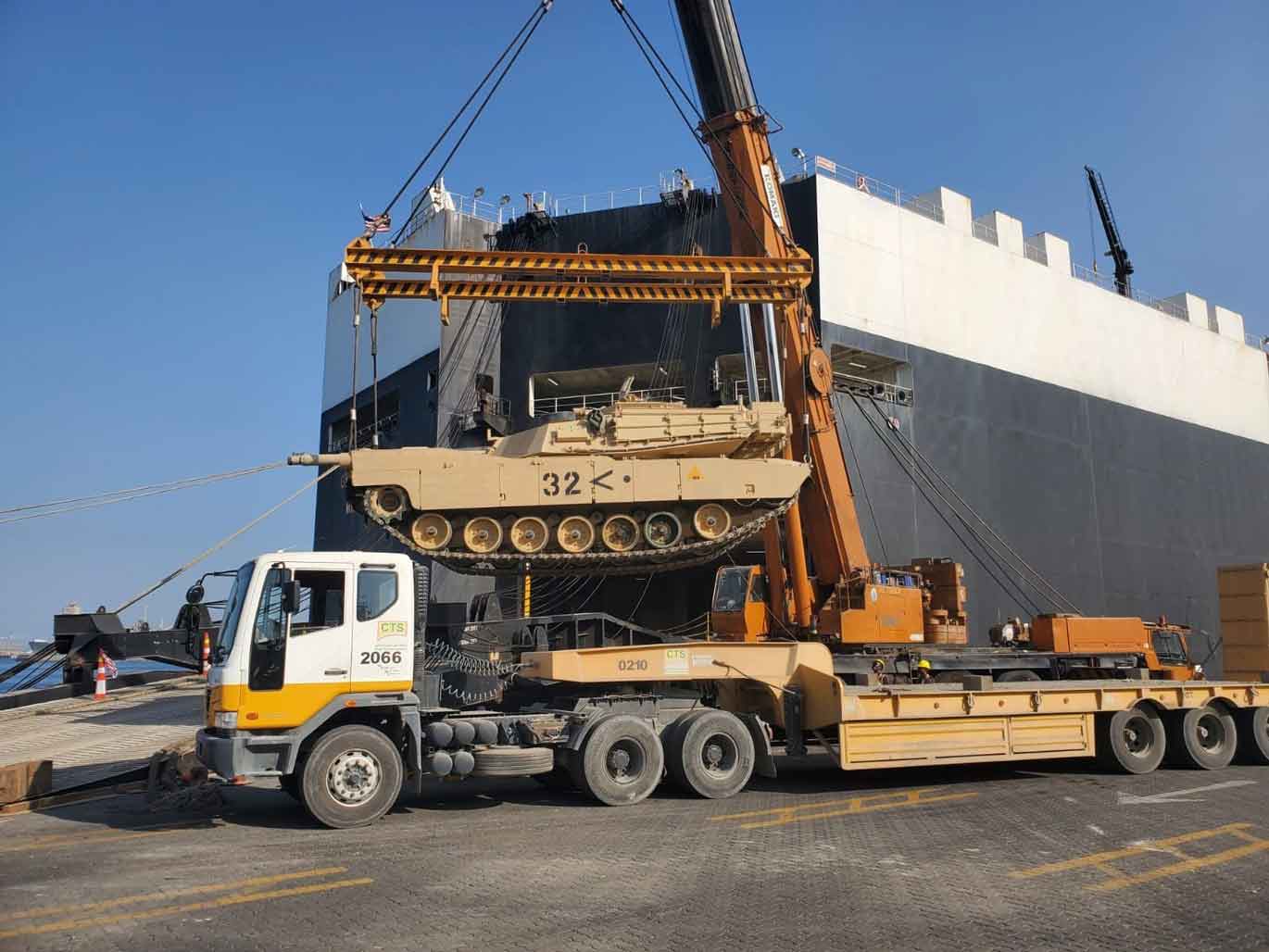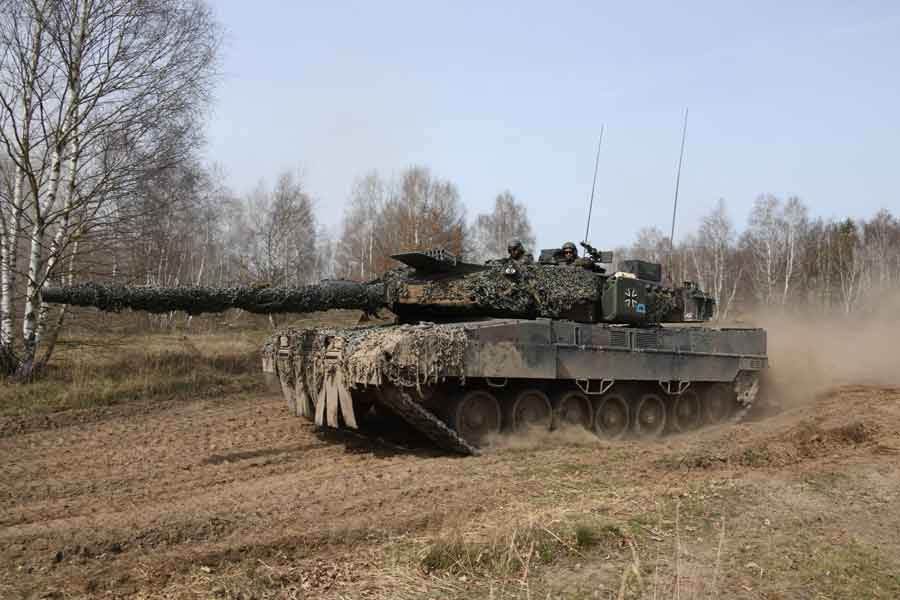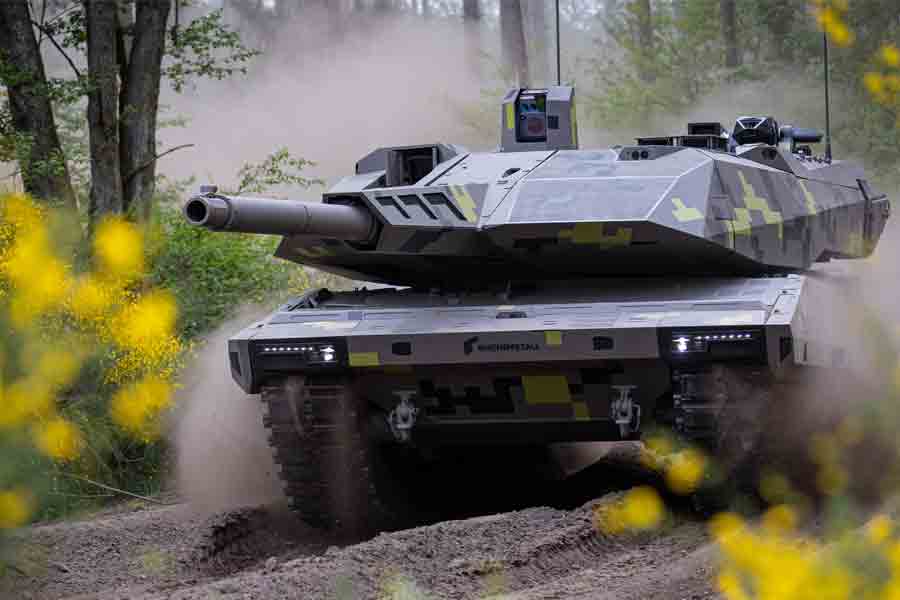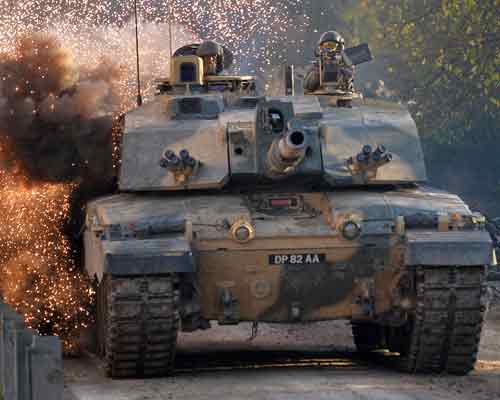Why the west may be willing to risk revealing its tank secrets to Russia
Tanks bound for Ukraine contain manufacturing and performance secrets, but is the West willing to risk losing them to Russia in return for victory in Ukraine?
Peter Ong
07 February 2023
 A 30th Armored Brigade Combat Team, M1A2 Abrams tank being lifted by a Cargo Transportation Services contractor: The US is sending 30 of the tanks to Ukraine, but they have manufacturing and performance secrets in their thermal sights, weapons, composite armour, performance, and electronic controls that could potentially fall into Russian hands (US Army Photo by Sgt. 1st Class Anthony D. Windsor)
A 30th Armored Brigade Combat Team, M1A2 Abrams tank being lifted by a Cargo Transportation Services contractor: The US is sending 30 of the tanks to Ukraine, but they have manufacturing and performance secrets in their thermal sights, weapons, composite armour, performance, and electronic controls that could potentially fall into Russian hands (US Army Photo by Sgt. 1st Class Anthony D. Windsor)
After much debate, the US and Germany have finally agreed to send tanks to Ukraine. Germany will send its Leopard 2 tank, which is described as “the most popular tank in the world,” as it is operated by 13 European countries, while the UK will send Challenger 2s and the US will provide 31 M1A2 Abrams tanks.
Tanks are valued for their armour, thermal sights, and mobile firepower, but in some have questioned their utility on the modern battlefield. In Afghanistan, which is the last war most NATO countries fought, the UK did not send its Challenger 2s, even though senior-ranking military officials requested them, due to the terrain. The roads in Helmand were too narrow and IFVs offered better manoeuvrability.
Over the years, the British Army’s Challenger 2 tank fleet has suffered substantial cuts. In 2019, the Army announced that it would only upgrade 148 of its total fleet of 227 tanks to Challenger III status, with the rest being retired. In 2020, speculation was rife that then UK government, led by former Prime Minister Boris Johnson, planned to mothball its entire fleet of tanks to focus instead on investments in cyber warfare, information systems and attack helicopters.
The tank also fell out of favour with the US Marine Corps, which got rid of its active duty tank units and most of its traditional tube artillery as part of USMC Gen. David Berger’s plan to redesign the force to confront China and other peer adversaries by 2030.
But with the war in Ukraine main battle tanks are front and centre again, with experts agreeing they could make a strategic difference on the ground if accompanied by artillery and infantry support. But the number of tanks (31 Abrams, 80 Leopard 2 tanks from Germany and other EU countries, and 14 Challenger 2s) so far pledged may not be enough for Ukraine to launch simultaneous offensive operations to break Russian defences.
In the case of the Abrams, which the US Department of Defense (DoD) has agreed to send to Ukraine, the tanks will not come from existing US Army stocks but will be “refurbished” to DoD export controls and have weaker sensors and armour than the M1A2 System Enhancement Package (SEP) version currently operated by the army.
The tanks being sent to Ukraine have manufacturing and performance secrets
At this stage, it is still unclear what features of the M1A2 Abrams tanks will be retained for Ukraine. However, one concern, which may explain the initial reluctance to send tanks, is that they have manufacturing and performance secrets in their thermal sights, weapons, composite armour, performance, and electronic controls that could potentially fall into Russian hands.
Much secrecy surrounds the M1A2’s generation of thermal sensors. The US Army’s M1A2SEPv4 features third-generation thermal sights with increased performance, resolution, and detection range whereas export M1A2s usually have first and second-generation thermals.
The highly classified Chobham composite armour is also used in the UK Challenger, German Leopard 2, and US Abrams tanks. The US Army’s M1A2s also have highly secretive Depleted Uranium (DU), a very dense metal, sandwiched into their armour matrix and highly resistive to kinetic Sabot rounds. DU is often not included with exported M1A2 tanks, but Chobham’s composition, thickness, performance, weight, and repair methods remain a Western tank secret.
The Leopard 2’s 120 mm smoothbore main gun was used in Operation Desert Storm in the 1990s and Operation Iraqi Freedom (2003-2011) against Russian T-72 and lesser tanks, but has not seen combat against top-of-the-line Russian T-80, T-90, or T-14 “Armata” tanks, although the latter has not featured in the war in Ukraine. The Leopard 2 and M1A2 Abrams use the same 120 mm gun.
The M1A2 also has a Commander’s Independent Thermal Viewer (CITV), GPS antenna, armoured Auxiliary Power Unit, quiet gas turbine engine, radios, digital electronics, Blue Force Tracker, and Commander’s remote weapons station. How many of these technologies the M1A2s bound for Ukraine will have is unclear.

Can the West maintain its tank secrets?
So, can the DoD aid Ukraine and maintain its tank secrets? Dakota Wood, Senior Research Fellow at The Heritage Foundation, offers his insights. “Perfect security in this regard is impossible. Individual components like sights and communications boxes can either be denied – not included with the tanks given to Ukraine – but that means the tank is less capable — or expected to be removed should the tank be damaged in combat action. Of course, the latter presumes recovery efforts can be made and would be successful in the heat of battle, which is not likely.”
One can keep the enemy from capturing equipment and its design secrets by not using it until necessary, says Wood, but this doesn’t help Ukraine. “Giving Ukraine modern western equipment —Abrams, Leopard, Challenger [tanks] – by default includes the risk that design secrets will be compromised. These tanks are the best precisely because they include [these] improvements. Risk can be mitigated by removing certain items, as mentioned, but this lessens the effectiveness of the platform.”
Wood says it comes down to balancing risk vs. reward. “With the tanks, Ukrainian forces will have the ability to defeat Russian forces, but it also carries the risk of western designs being acquired by the Russians. Western secrets are kept safe without the tanks, but Ukrainian forces are denied battlefield advantages.”
The question then becomes, says Wood, how important is it to the west to prevent a Russian victory in Ukraine? “There is an opportunity here for the west,” he says. “This is an opportunity to see how these tanks fare against Russian anti-armour weapons on a modern, large-scale combat, battlefield. Might be nice to know if these tanks have any flaws that should be corrected before the US or partner countries find themselves at war.”
RELATED ARTICLES
Challenger 3 Tank for the British Army
Meet the KF51 Panther, Europe's newest main battle tank

